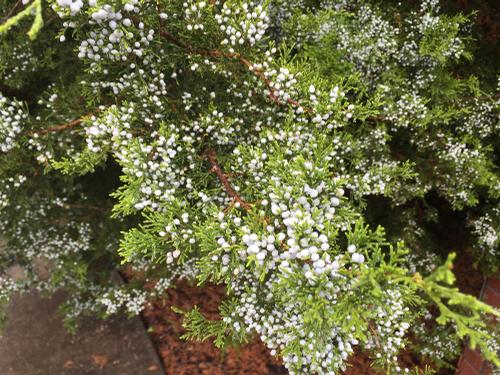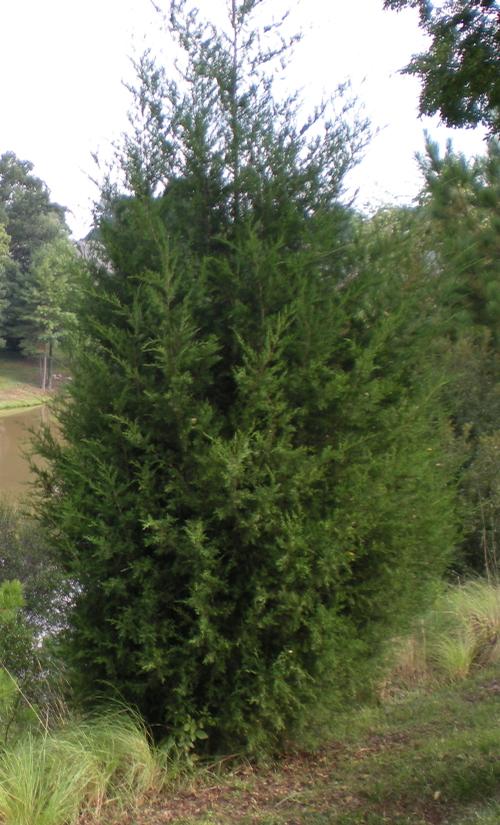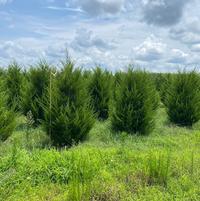Juniperus virginiana
The Eastern red cedar is a great choice when a simple, carefree evergreen tree is needed in the landscape. Plant as a specimen or in groups for windbreaks, shelterbelts, and privacy hedges. Lower limbs can be pruned up as plants age to expose handsome gray to reddish exfoliating bark on the trunk. Can also be used for topiary.
Light blue-green clusters of cones mature in late winter or early spring. Female (or predominantly female) trees produce small, round blue cones that mature in the fall and are devoured by cedar waxwings. Male trees bear small pollen-producing cones. Pollen is wind-borne and released in large quantities.
Eastern red cedar provides shelter for wildlife, nesting sites and berries for birds, pollen for pollinators, and food for caterpillars.
- Evergreen, coniferous native
- Upright, pyramidal habit
- Deer resistant, drought tolerant
- Category:
Shrub,
Native
- Hardiness Zone: 3-9
- Height: 20-30 ft
- Spread: 8-20 ft
- Foliage Color:
Green
Login for pricing






